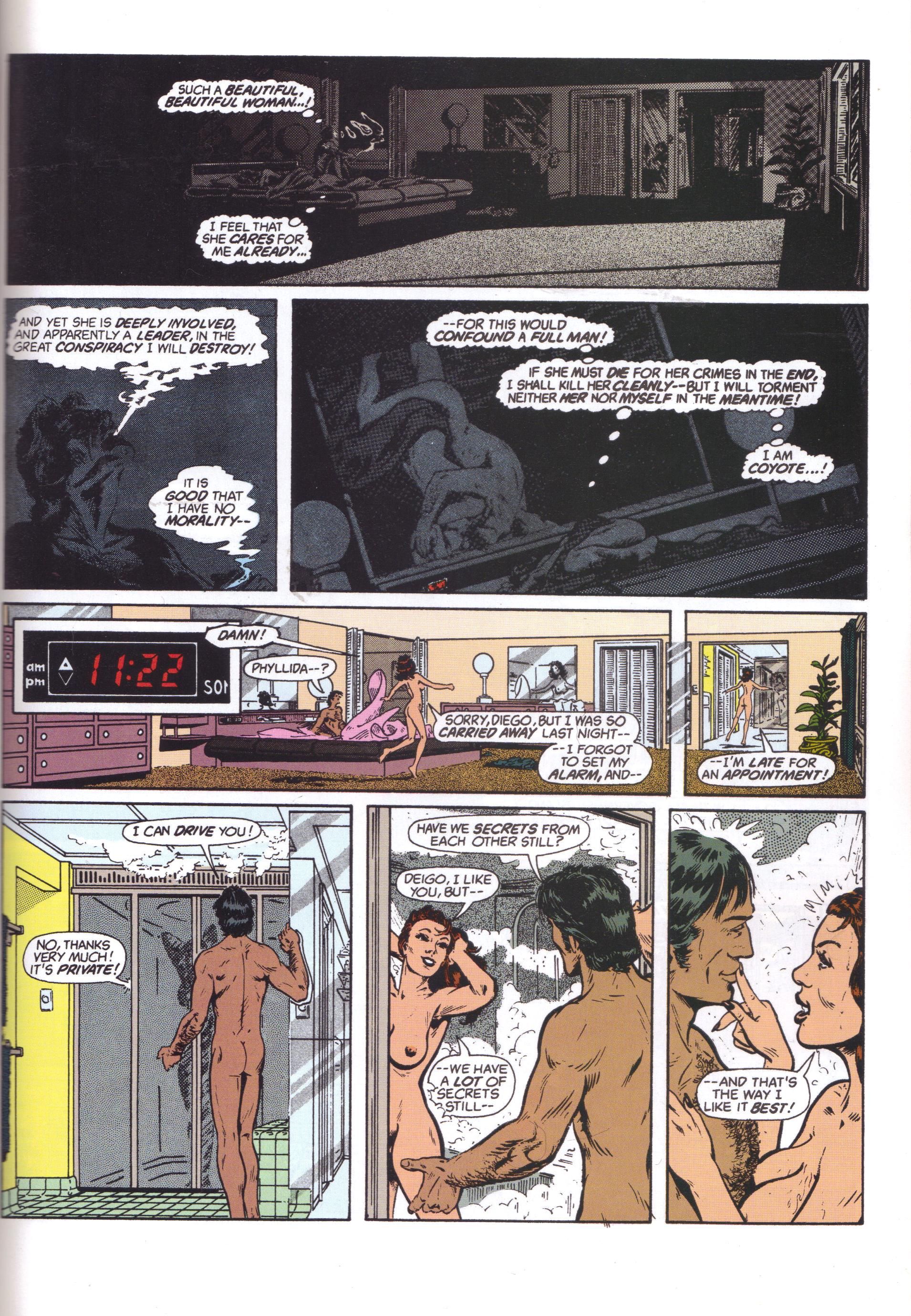Every day this year, I will be examining the first pages of random comics. Today's page is from Eclipse, the Magazine #4, which was published by Eclipse and is cover dated January 1982. It's the story called "I Am Coyote," of which this was the third chapter (and I really hope I picked an actual first page - I think I did!). This scan is from the trade paperback Coyote volume 1, which Image published in 2005. There's also a bit of nudity below the cut, so be warned! Enjoy!
When you think of Steve Englehart and Marshall Rogers, you probably think of their brief yet classic run on Detective Comics, but they worked together on other stuff, including Coyote - although Rogers only did the short chapters in Eclipse Magazine before giving way to other artists, including a young Toddster. I really ought to get the rest of the trades Image put out, if they're still in print - I haven't read this in years, but I remember enjoying it. But let's check out this page, shall we?
So in the first two chapters, we discovered that Diego there can turn into a were-coyote and that he's tracking some sinister organization, of which Phyllida there is the head. Oh dear. So Diego seduced her, like you do. Englehart doesn't get us caught up too much - these chapters were short, after all, and he had no time! - but through Diego's thought balloons, we discover that she's the leader of some great conspiracy (even if you've read the previous installments, you don't know what it is yet), and that he's definitely going to kill her. Already, in the first three panels, we have an interesting character - he has no morality, his thoughts tell us, but he'll kill his enemy "cleanly." Of course, we quickly learn that Phyllida has secrets too, and the fact that Diego plaintively whines about it is odd, because he just met her the previous night. I mean, what did he expect? Phyllida shows that she is also an interesting character - in an age when women, despite a sexual revolution, were still supposed to be demure, she just likes the sexy times and doesn't think anything more of it. Good for her!
Rogers was a very good artist, although he had his ups and downs, certainly. I imagine working in short bursts like this (10 or so pages per month) helped him, because the actual pencil work on this book is superb. This was the era of Zip-A-Tone, which Rogers uses to good effect in the first three panels. It's dark but not pitch black, so we can see Diego sitting up in bed and smoking in the first panel and his head back in the second panel (note how the thought balloon mingles with the smoke - it's a neat effect). The only problem with the darkness is in Panel 3, although I'm not sure if lighting the panel up would help. I'm pretty sure, based on the lamps (?) on the side and the alarm clock, that it's a tilted view of the bed from the foot, and Diego is lying down and wrapped around Phyllida. The mirror behind the bed seems to indicate this, but unless it's tilted forward, why would the mirror reflect this? It's always interesting to see artists try to give us different views of a scene, but I think Rogers outthinks himself here and makes it more confusing than it has to be. Notice that when the alarm goes off, Rogers breaks up Panel 1 into two separate panels (Panels 5 and 6, if we count the alarm clock as a separate panel) so that he can show Phyllida moving across the room. It's a nice trick, and while I don't know if Rogers redrew Panel 1, if he didn't, it gives the illusion of it because he obviously placed figures in it moving around the room. I love the decor, too - the late 1970s rocked! (Yes, I know this came out in 1982, but that bed looks very 1970s, man!) Notice that Rogers does a nice job moving us across the panels - the layout isn't too inventive, but he's constantly moving us from the left to the right - Phyllida trips across the bedroom, Diego is on the right side in Panel 7 when he's talking to Phyllida, Phyllida looks at Diego from the background and the left in Panel 8, and he's in the foreground and on the right, leading us to Panel 9, where Diego stands on the left, looking down at Phyllida and leading us from him to her. Rogers gets quite a bit of visual information onto this page, and Englehart is able to pack a lot of exposition onto it because Rogers knows how to design a page. In an age where text was far more important than it is now, the ability to clearly tell a story in the art while not disrupting the flow of the words was important, and Rogers was pretty danged good at it. (I'm not mentioning the coloring, by the way, because this was originally in black and white. In case you were wondering.)
Diego does kill Phyllida, in case you're wondering. He said he would!
So that's Coyote. It's pretty good. Go find the trade!
Next: You might think we've had enough of the God of All Comics, but can you really have enough? I don't think so! Find more of him in the archives!


